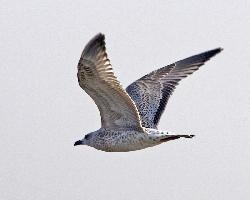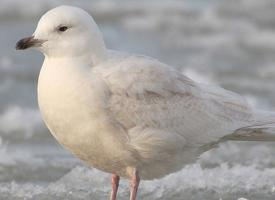
Stav ohrožení
| Ohrožen |
Popis zvířete
The Western Gull, scientifically named Larus occidentalis, is a large species of seabird in the family Laridae, primarily found along the western coast of North America. This bird is easily identifiable by its robust build, striking plumage, and the distinctive sounds it makes. Adult Western Gulls have a white head and underparts, with a deep slate-gray back and upper wings. The tips of their wings are black with white spots, known as "mirrors". Their heavy, slightly hooked bill is bright yellow with a red spot on the lower mandible, which serves as a target for their chicks to peck at, stimulating regurgitative feeding. Their legs are a strong, pinkish color, which contrasts with their overall dark and light coloration.Adults reach a length of about 55 to 68 centimeters (22 to 27 inches) with a wingspan that can extend up to 150 centimeters (59 inches), making them one of the larger gull species. The Western Gull exhibits sexual dimorphism, with males generally being larger and having a slightly deeper bill than females.
Western Gulls are native to the Pacific Coast of North America, ranging from British Columbia, Canada, down through to Baja California in Mexico. They are commonly found nesting on offshore islands and rocks along the coastline, where they lay their eggs in nests constructed from seaweed, grass, and feathers. These birds are territorial during the breeding season and are known to aggressively defend their nests against predators and intruders, including humans.
The diet of the Western Gull is varied and opportunistic. They feed on a wide range of items, including fish, invertebrates, and marine organisms, which they often catch by dropping shellfish from a height to break them open. They are also known to scavenge along beaches, around fishing harbors, and in urban areas, where they can become quite adept at exploiting human sources of food.
Western Gulls play an important role in the ecosystem as both predator and scavenger. By controlling populations of smaller marine animals and cleaning up dead organisms and human refuse, they help maintain the health and balance of their coastal habitats.
The social behavior of Western Gulls is complex and fascinating. Outside of the breeding season, they are often seen in large, mixed-age flocks. During the breeding season, however, they become more solitary or form pairs. Their vocalizations are varied and include a repertoire of calls used for communication within colonies, including alarm calls, mating calls, and calls used between parents and offspring.
Conservation-wise, the Western Gull is currently not considered to be at risk. However, like many seabird species, they face threats from pollution, habitat loss, and changes in food availability due to overfishing and climate change. Conservation efforts aimed at protecting marine environments and regulating fisheries are crucial for ensuring the long-term survival of the Western Gull and the broader marine ecosystems they inhabit.
In summary, the Western Gull is a key species along the Pacific Coast of North America, characterized by its distinctive appearance, adaptability, and complex social behaviors. As an integral part of coastal ecosystems, understanding and protecting this species is essential for maintaining the health and diversity of marine life in the region.
Podobná zvířata
Nové fotografie zvířat
Top 10 zvířat
- Dolphin gull (Leucophaeus scoresbii)
- Diana monkey (Cercopithecus diana)
- Moustached guenon (Cercopithecus cephus)
- Galápagos tortoise (Geochelone nigra complex)
- Russian tortoise (Testudo horsfieldii)
- Stone loach (Barbatula barbatula)
- Japanese macaque (Macaca fuscata)
- Common flying dragon (Draco volans)
- Greek tortoise (Testudo graeca)
- Vendace (Coregonus albula)


